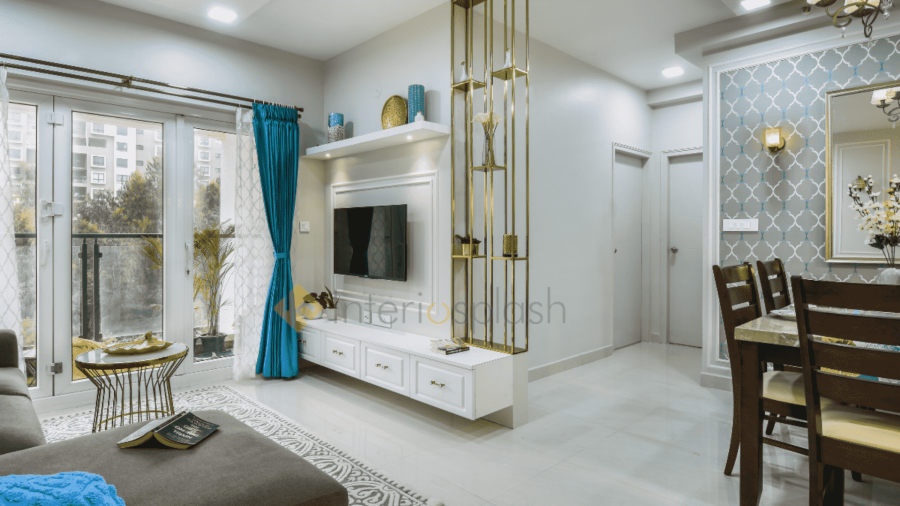Introduction
When it comes to creating a space that reflects personal style and functionality, the role of interior designers cannot be overstated. Best Interior Designers are the talented individuals who have the ability to transform any space into a true masterpiece.
From selecting the perfect color palette to incorporating the latest trends, these creative minds have the power to shape our living environments and evoke emotions with their designs.
The Philosophies That Shape Our Spaces
In the realm of interior design, the individual philosophy of a designer acts as the compass by which they navigate through the sea of creative possibilities.
These philosophies are not merely aesthetic choices but are imbued with a deeper significance that reflects the designer’s perspective on life and living spaces.
For instance, proponents of minimalism might view their approach as a way to strip away the unnecessary, creating environments that foster tranquility and mental clarity for the inhabitants. Here, the emphasis is on the essential, with each element serving a purpose, both in form and function.
Conversely, designers who embrace a maximalist philosophy often see their spaces as canvases to express vibrancy, diversity, and personality. In these interiors, bold patterns, rich textures, and an eclectic mix of elements coalesce to tell a story, reflecting the complexity and richness of human experience. These spaces are designed not just to be seen but to be felt, offering an immersive experience that engages all the senses.
This dichotomy between minimalism and maximalism is but a glimpse into the vast spectrum of philosophies that influence interior design. Each designer’s unique viewpoint informs their approach to space, influencing everything from the spatial layout to the choice of materials and colors.
It’s through understanding these underlying philosophies that we can begin to appreciate the depth and nuance of interior design, recognizing it as an art form that shapes not just our spaces, but also our experiences within them.
The Marriage of Functionality and Aesthetics
At the core of exceptional interior design lies the intricate dance between functionality and aesthetics. It’s a delicate balancing act where the best interior designers excel, merging visual appeal with practicality in a way that seems almost effortless.
These professionals possess the keen ability to assess a space not just for its potential beauty but for how it will serve the needs of those who live in it. This is where the artistry of interior design truly shines – in the creation of environments that are not only breathtakingly beautiful but also deeply functional.
Consider the designer’s task in selecting furniture. It’s not simply about choosing pieces that catch the eye; it’s about finding those that invite comfort, support activities, and facilitate the flow of life within a space. The same principle applies to the spatial layout. A well-designed room accounts for movement and interaction, guiding its inhabitants with an intuitive sense of place and purpose.
In essence, the best interior designers are those who understand that the true beauty of a space is reflected in how well it aligns with the lived experience of its occupants. They are adept at weaving together textures, colors, and forms in a manner that elevates the everyday.
By doing so, they ensure that the spaces they craft are more than just a backdrop for life; they are an integral part of it, enhancing every moment spent within them.
The Evolution of Interior Design Trends
The landscape of interior design is in perpetual motion, with trends emerging, transforming, and occasionally, resurfacing with a contemporary twist. The best interior designers have an acute awareness of this ever-shifting terrain, skillfully integrating fresh trends into their work to create spaces that resonate with the zeitgeist while remaining timeless.
These innovators draw inspiration from a global canvas, blending cultural influences, historical contexts, and forward-thinking ideas to forge designs that speak to a wide audience.
Sustainability has risen to the forefront of contemporary design, reflecting a growing consciousness around environmental impact and a desire for spaces that harmonize with nature. Today’s leading designers are not only adopting eco-friendly materials but are also pioneering the use of repurposed and responsibly sourced elements, weaving these into interiors that exude both elegance and ethical awareness.
Another significant shift is the increasing blurring of boundaries between indoor and outdoor spaces, with designs that foster a seamless flow between the two. This approach not only expands the living area but also invites an element of the natural world into the heart of the home, promoting wellbeing and a sense of tranquility.
As we navigate through this era of rapid change, the role of the interior designer evolves beyond aesthetics, embracing a broader responsibility to anticipate the needs of the future and craft spaces that reflect not only the present but the possibilities of tomorrow.
The best interior designers stand at the vanguard of this evolution, channeling their creativity and expertise to shape environments that adapt, inspire, and endure.
The Impact of Technology on Design
In the dynamic world of interior design, technology serves as a catalyst for innovation, expanding the toolkit of the best interior designers and reshaping the traditional boundaries of the craft. Advanced technologies such as virtual reality and 3D modeling have ushered in a new era of design possibilities, enabling designers to explore and refine their ideas with unprecedented precision and creativity.
Virtual walkthroughs and simulations allow for a level of immersion that was previously unimaginable, giving clients a unique opportunity to experience and interact with their spaces before they are brought to life. Additionally, smart home technology integrates seamlessly into modern interiors, offering both aesthetic appeal and enhanced functionality.
Through the judicious application of these technological advancements, interior designers are not only meeting the current demands of their clients but are also anticipating the future needs of living spaces, ensuring that their designs remain at the forefront of both form and function.

